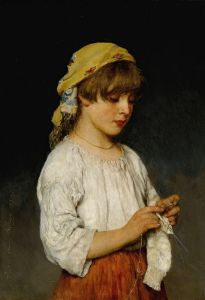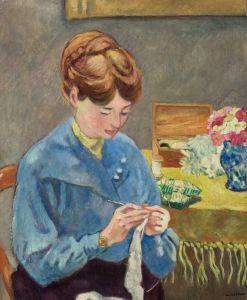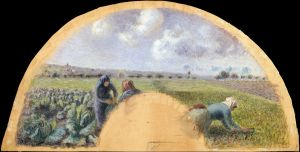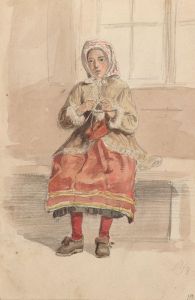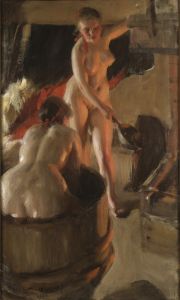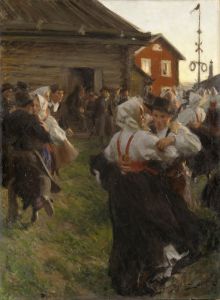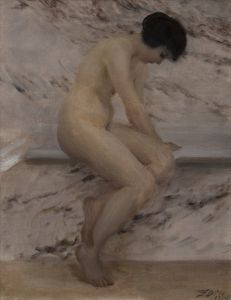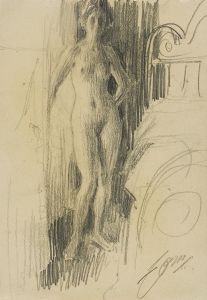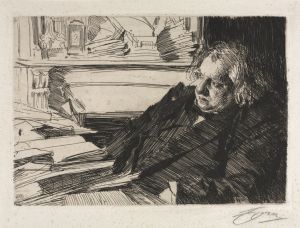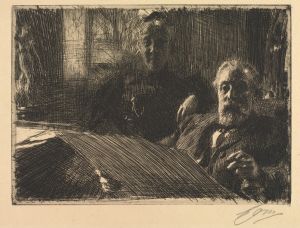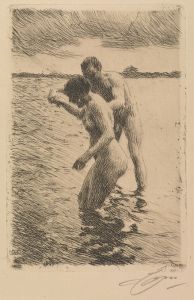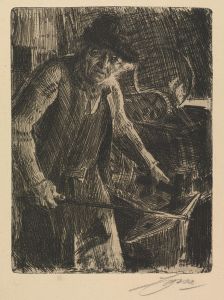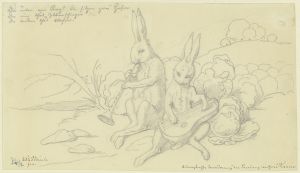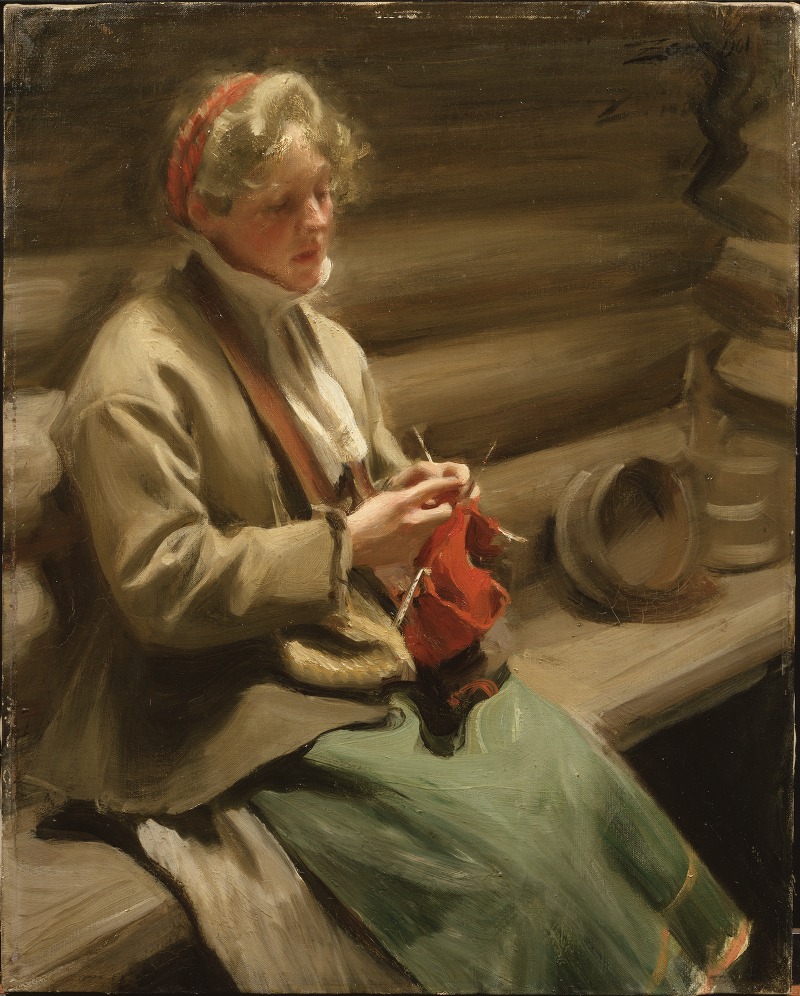
Dalecarlian Girl Knitting. Cabbage Margit
A hand-painted replica of Anders Zorn’s masterpiece Dalecarlian Girl Knitting. Cabbage Margit, meticulously crafted by professional artists to capture the true essence of the original. Each piece is created with museum-quality canvas and rare mineral pigments, carefully painted by experienced artists with delicate brushstrokes and rich, layered colors to perfectly recreate the texture of the original artwork. Unlike machine-printed reproductions, this hand-painted version brings the painting to life, infused with the artist’s emotions and skill in every stroke. Whether for personal collection or home decoration, it instantly elevates the artistic atmosphere of any space.
"Dalecarlian Girl Knitting. Cabbage Margit" is a painting by the renowned Swedish artist Anders Zorn, created in 1901. Zorn, born in 1860 in Mora, Sweden, is celebrated for his exceptional skill in painting, etching, and sculpture. He is particularly known for his portraits, nudes, and depictions of rural life in Sweden. His works are characterized by their vivid realism and masterful use of light and shadow.
This particular painting, "Dalecarlian Girl Knitting. Cabbage Margit," is a fine example of Zorn's ability to capture the essence of Swedish rural life. The painting depicts a young girl from the Dalarna region, known as Dalecarlia in English, which is a historical province in central Sweden. This area is known for its rich cultural heritage and traditional Swedish customs, which Zorn often celebrated in his work.
The subject of the painting, referred to as "Cabbage Margit," is shown engaged in the simple, everyday activity of knitting. This choice of subject reflects Zorn's interest in portraying ordinary people and their daily lives, a theme that recurs throughout his oeuvre. The girl's attire and the setting provide insight into the traditional lifestyle of the time, offering a glimpse into the cultural context of early 20th-century Sweden.
Zorn's technique in this painting is noteworthy for its loose yet precise brushwork, which conveys both the texture of the girl's clothing and the natural surroundings. His use of light is particularly striking, as it highlights the girl's focused expression and the intricate details of her knitting. This attention to detail and the ability to capture the subtleties of light and shadow are hallmarks of Zorn's style.
The painting is also significant for its portrayal of the Dalarna region's cultural identity. By choosing a subject from this area, Zorn not only documented the traditional way of life but also contributed to the preservation of Swedish cultural heritage. His works often serve as historical records, capturing the essence of a time and place with authenticity and respect.
Anders Zorn's impact on the art world extends beyond his paintings. He was a prominent figure in the international art scene during his lifetime, exhibiting his work across Europe and the United States. His contributions to art were recognized with numerous accolades, and he remains one of Sweden's most celebrated artists.
"Dalecarlian Girl Knitting. Cabbage Margit" is housed in the Zorn Museum in Mora, Sweden, which is dedicated to the artist's life and work. The museum holds an extensive collection of Zorn's paintings, sculptures, and personal artifacts, offering visitors a comprehensive view of his artistic legacy.
In summary, "Dalecarlian Girl Knitting. Cabbage Margit" is a testament to Anders Zorn's mastery of portraiture and his dedication to depicting the cultural richness of Sweden. Through this painting, Zorn not only showcases his technical prowess but also provides a window into the everyday life of the Dalarna region, preserving its traditions for future generations to appreciate.





